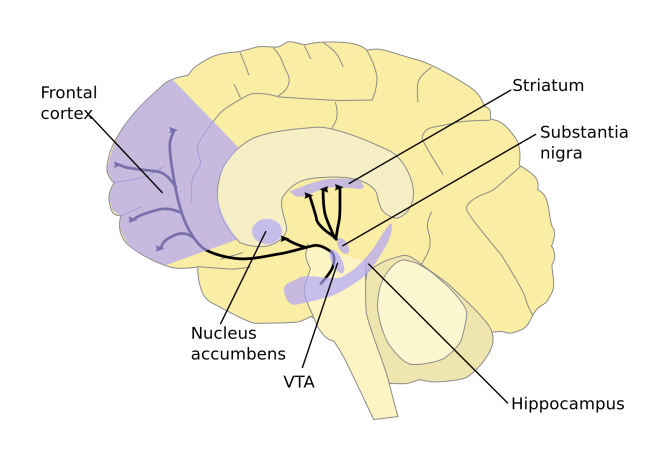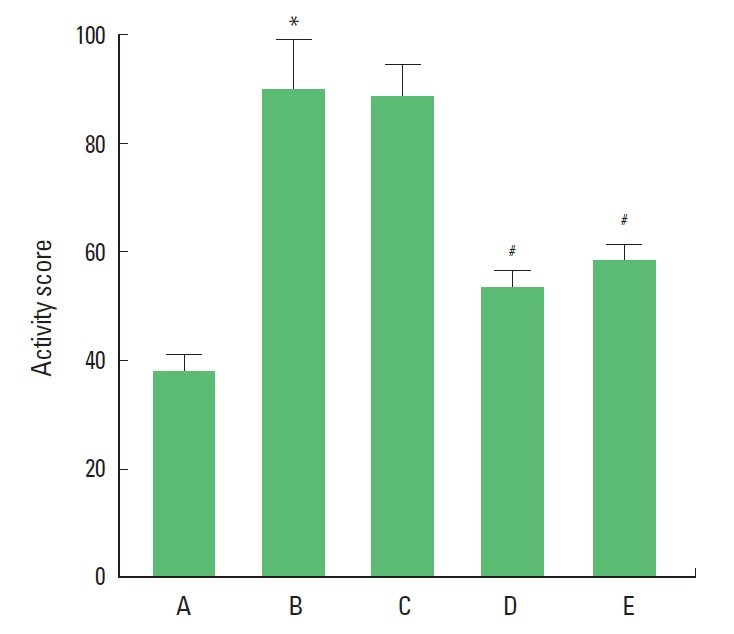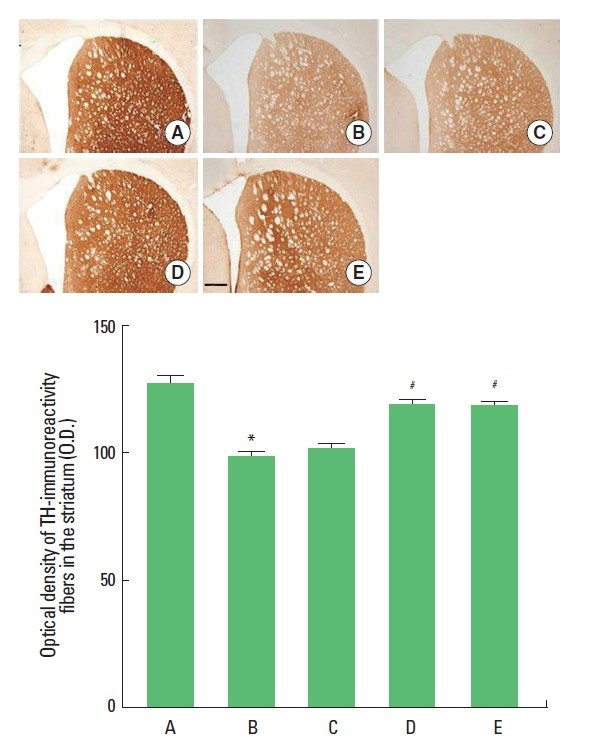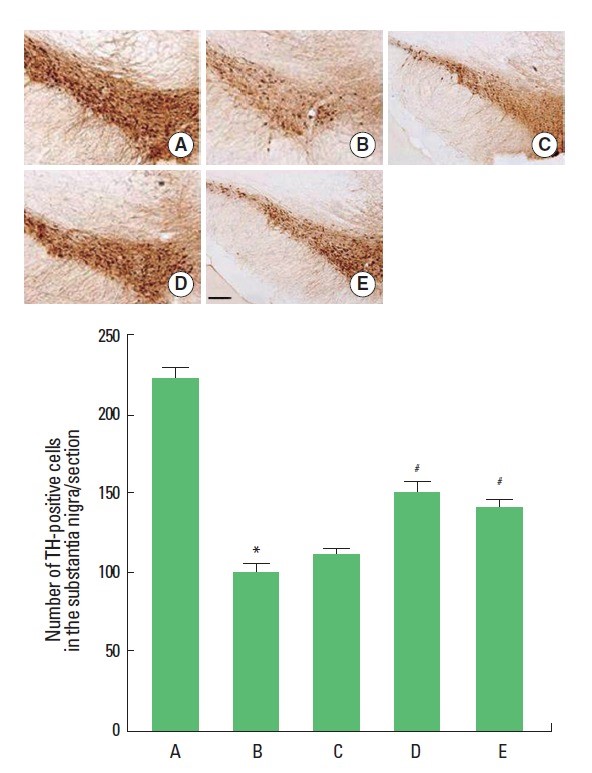Contents
What is ADHD?
Attention-deficit/hyperactivity disorder is a psychiatric disorder, which affects the neuronal development of the brain. It causes learning difficulties, hyperactivity and in extreme cases impulsive behaviour. ADHD is related to hyperkinetic disorder, but impulse-control is greatly diminished in hyperkinetic disorder (Banaschewski and Rhode, 2009).
The symptoms of ADHD include:
- Difficulty in focusing on tasks; therefore problems arise in completing assignments/homework.
- Lack of focus can also create problems in listening, multitasking and following instructions.
- Easily distracted, daydreaming and forgetful.
- Processing information is slower, more straining.
- Wanting to be in constant motion; these can include fidgeting, not being able to be quiet for long periods of time as well as restlessness.
- Struggle with social interactions, this may be due to difficulty in understanding verbal and non-verbal language or missing social cues.
However these symptoms may be easily mistaken for personally traits, that is why a standard system of ADHD diagnosis was introduced. Successful diagnosis has to include 6 months or more of persistent symptoms, extreme behaviour compared to their age group and must cause inconvenience in the person’s life. ADHD can also be connected with other illnesses such as Tourette syndrome, anxiety and Bipolar.
ADHD in Adults
Children with ADHD have shown to have their symptoms improved or almost diminished as they matured into adolescence and adulthood. Recent evidence has revealed it may be because of the areas of the brain associated with attention having a slow development (Shaw et al, 2012), but eventually reaching to a normal level. However two-thirds of these children would still have symptoms in adult life, whether severe or partial (Kooij et al, 2010).
Dopamine as a cause of ADHD
Attention deficit-hyperactivity disorder is thought to be a consequence of imbalances in the dopaminergic and, to a lesser extent, noradrenergic systems. Dopamine is an enzyme as well as a catecholamine hormone released by both humans and animals by the brain and is responsible for neuroendocrine functions, attention, addictions, cognition, behaviours such as motor activity, pleasure and reward systems. Dopamine neurotransmitting plays an important role in and is also related to other diseases such as Parkinsons. Brain functions such as movement, motor planning, learning etc are linked to the substansia nigra (SN) in the midbrain mediated through the striatum. Dopamine is also responsible for the control of the direct and indirect pathways of the basal ganglia within the brain which mediate movement. Dopamine is produced in the neurones of the midbrain and more specifically the Ventral Tegmental Area (VTA), the substancia nigra pars compacta and the in the hypothalamus, distinctively in the arcuate nucleus (Dr Mandal, 2014). Disfunctions of the D2 signals in these areas are a possible mechanism of behaviour of ADHD, since the nigral dopaminergenic input follows the nigrostriatal pathway to the striatum where the D2 receptors are found.
Figure 1: Dopamine pathway

Tyrosine Hydroxylase (TH) is an enzyme that synthesizes neurotransmitters of the catecholamine family. It is responsible for the conversion of L-tyrosine to L-dihydrophenylalanine (L-DOPA), which is the rate- limiting step in the synthesis of dopamine. Hence, if the D2 neurons in the SN are lost or disfunctional, TH decreases accordingly. By analyzing the immunohistochemistry of this particular enzyme, the dead dopamine cells or fibres can be made out (Ji et al, 2014). These above specifications lead to certain behavioural changes which suggest that D2 suppression or signalling disfunction can be the main cause and mechanism of hyperactivity and attention deficiency in ADHD patients.
Specifically it was discovered that the dopamine transporter gene DAT-1; SLC6A3 locus – a non coding region locus- is the gene receptive to ADHD. In a patient’s brain suffering from ADHD, the DAT-1 density is much more than a person without ADHD, however this can decrease with treatments. Research is being done for a 40 base pair (bp), which is a short nucleotide sequence arranged in repeats within a location of a genome; this is also known as variable number of tandem repeats (VNTR). This research is proving that a polymorphism within the SLC6A3 locus, may be closely linked to ADHD (Barr et al, 2001). It is being studied that the allele that has the 40bp sequence repeated 10 times (10-repeat-allele) may be the risk allele of the disorder, ADHD. This polymorphism may even be associated in vivo or in vitro into the DAT-1 dopamine transport gene expression or density, even though it is in a non coding region of the locus (Roman et al,2004).
Medication affecting ADHD
Dopamine, being associated as one of the main ADHD causes, has had several attempts to be altered via treatments such as medications in order to decrease the ADHD effects via scientific trials. ADHD is thought to be a result of the Dopamine system hypofunction which is usually due to high levels of D2 receptors through their overproduction but a corresponding low Dopamine (DA) synthesis. One of these trials were performed on Spontaneous Hyperactive Rats (SHR) which were used as ADHD animal models. These young male rats were distributed into 4 groups and were treated with different doses of a medication called atomoxetine everyday for 3 weeks. The Dopamine D2 receptor expression was evaluated in an open field test in this study. The trial proved that the previously elevated expression of D2 receptors in the midbrain, striatum and hypothalamus of the SHR, in comparison to the WKY rats (Wistar Kyoto), has decreased after certain doses were given allowing a more sufficient function of the DA system. Specifically it was determined that a dose of 1 mg/Kg/day made the efficient improvement in the motor skills of the rats compared to the other applied doses. This study therefore established that by treating young SHRs with atomoxetine, their hyperactivity could be relieved via the dopamine D2 receptor pathway. This experiment thus demonstrates one form of treatment of ADHD through medication (Moon et al, 2014).
Exercise on ADHD
In this study, the relationship between ADHD, Dopamine synthesis and Tyrosine hydroxylase (TH) will be examined. As well as how exercise has an influence on the synthesis of dopamine and its consequences on the symptoms of ADHD. Specifically, in the midbrain substantia nigra (SN) the functioning of dopamine signalling is investigated.
The Trial
To achieve this, spontaneously hypertensive rats (SHR) which show key symptoms of ADHD including hyperactivity, impulsiveness and inattention. As a control group, Wistar-Kyoto rats (WKYR) were used. All rats were around the same weight (210±10 g) and were housed in the same conditions (temperature and lighting with food and water ad libitum). In the experiment, the ADHD rats were separated into groups: ADHD no treadmill exercise, ADHD with 10 minutes daily of treadmill exercise, ADHD with 30 minutes daily of treadmill exercise, ADHD with 60 minutes of treadmill exercise. The control group was not required to do any exercise.
The trial lasted for 28 days and the rats being required to do their according amount of treadmill exercise daily, five times a week. On the 28th day, an open field test was used on each rat. This consisted of an enclosed (100 cm×100 cm) white square open arena with strong illumination. The arena was divided into squares, 9 central and 16 peripheral. The rats was left to explore the arena for five minutes and the number of squares the rat entered was recorded. After the open field test, the rats were euthanized and their brains were dissected enabling immunolabeling of Tyrosine hydroxylase in the striatum and substantia nigra and Tyrosine hydroxylase immunohistochemistry. From this the TH-immunoreactive fiber density was measured and the number of Tyrosine Hydroxylase positive cells in the substantia nigra was counted (Ji et al, 2014).
Results
Effect of treadmill exercise on hyperactivity in the open field test
- Figure 2: Effect of exercise on hyperactivity in ADHD models

(A) Control group. (B) ADHD group with no exercise. (C) ADHD with treadmill exercise for 10 minutes daily group. (D) ADHD with treadmill exercise for 30 minutes daily group. (E) ADHD with treadmill exercise for 60 minutes daily group. *Represents P< 0.05 compared to the control group. #Represents P< 0.05 compared to the ADHD group.
Effect of treadmill exercise on tyrosine hydroxylase-immunoreactive fibers in the striatum
- Figure 3: Effect of exercise on TH-immunoreactive fibers in the striatum

- (A) Control group. (B) ADHD group with no exercise. (C) ADHD with treadmill exercise for 10 minutes daily group. (D) ADHD with treadmill exercise for 30 minutes daily group. (E) ADHD with treadmill exercise for 60 minutes daily group.
Shown in these results of the immunochemistry, from both the photomicrographs and the figure you can see that the optical density of TH-immunoreactivity fibers is greater in the control group and reduced in the ADHD groups. Also recognized from this is the rats which were required to do 30 or 60 minutes of exercise daily had increased density of TH fibers.
Effect of treadmill exercise on tyrosine hydroxylase expression in the substantia nigra
- Figure 4: Effect of treadmill exercise on TH expression in the substantia nigra

- (A) Control group. (B) ADHD group with no exercise. (C) ADHD with treadmill exercise for 10 minutes daily group. (D) ADHD with treadmill exercise for 30 minutes daily group. (E) ADHD with treadmill exercise for 60 minutes daily group.
In similarity to the previous results, the control group showed substantial higher level of TH-positive cells in comparison to the ADHD rats. This once again, increased in the ADHD rats with exercise with the most significant increase showing in the group of rats which were required to do 30 minutes of exercise daily.
Conclusion of trial
The conclusion that can be drawn from all three sets of results is that the ADHD rats displayed increased hyperactivity which was reduced by the regular exercise particularly 30 minutes daily. Also the Tyrosine Hydroxylase in the striatum and the substantia nigra was reduced in ADHD rats and exercise had a positive influence on this.Therefore, it can be confidently concluded from this study that exercise is an effective therapeutic treatment for the relief of the symptoms of ADHD.
Alternative Hypothesis of Dopamine on ADHD
The University of Cambridge conducted a recent study which raised doubts about weather the disfucnticon of the dopaminogenic system is truly the main cause of ADHD. This theory is supported by the University's Medical Research Council (MCR) and Behavioural and Clinical Neuroscience Institute (BCNI) who believe that ADHD is rather due to differences in the structure of the grey matter in the brain. In their research, the grey matter and dopamine receptors were measured via positron emission topography (PET) as well as magnetic resonance imaging (MRI). This technique was used to evaluate the affect of the drug methylphenidate also known as Ritalin on both people with and without ADHD. A double blinded trial was carried out where neither the clinicians nor the patients knew if Ritalin or a placebo was being used. Several tasks were done before hand as well as after the administration of the medication in order to test their concentration span. It was discovered that the dopamine levels in the brain of both the patients with ADHD and the healthy people increased. In addition to this, the focus in both seemed to have improved in the same manner. Both initially showed to have equal amounts of D2 receptors as well as a rising in the dopamine in their striatum. However, ADHD patients who had performed more poorly on their tests appeared to have a considerably less proportion of grey matter in their brain.This led to believe that dopamine was never dysfunctional in the first place. Furthermore, Ritalin was found to have increased the dopamine levels in the striatum and suggest an increase in performance of concentration in both the controls and the ADHD patients as some healthy participants also showed and improved performance; proving that Ritalin is beneficial no matter if people have this disorder or not. These findings are believed to open doors to understanding ADHD more thoroughly and able to discover new treatments (Paddock, 2013).
- "These findings question the previously accepted view that major abnormalities in dopamine function are the main cause of ADHD in adult patients. While the results show that Ritalin has a 'therapeutic' effect to improve performance, it does not appear to be related to fundamental underlying impairments in the dopamine system in ADHD."
- Stated by co-author Professor Trevor Robbins, Director of BCNI (Paddock, 2013).
References
Banaschewski, T.; Rohde, L. (2009). "Phenomenology". In Banaschewski, T.; Coghill, D.; Danckaerts, M.; Rhode, L. Attention-Deficit Hyperactivity Disorder and Hyperkinetic Disorder. Oxford, UK: OUP. pp. 3—18. ISBN 9780199577651.
Barr, C. L.; Xu, C.; Kroft, J.; Feng, Y.; et al. (2001): Haplotype study of three polymorphisms at the dopamine transporter locus confirm linkage to attention-deficit/hyperactivity disorder. Biol Psychiatry 15;49(4):333-9.
Ji, E. S.; Kim, C. J.; Park, J. H; Bahn, G. H. (2014): Duration-dependence of the effect of treadmill exercise on hyperactivity in attention deficit hyperactivity disorder rats. J Exerc Rehabil 10(2): 75-80. doi: 10.12965.
Kooij, S. J.; Bejerot, S.; Blackwell, A.; Caci, H.; et al. (2010): European consensus statement on diagnosis and treatment of adult ADHD: The European Network Adult ADHD. BMC Psychiatry 10: 67. doi: 10.1186/1471-244X-10-67.
Mandal, A. (2014, Jan 14) : Dopamine Functions. News Medical. AZoNetwork. Retrieved from <http://www.news-medical.net/health/Dopamine-Functions.aspx >
Moon, S. J.; Kim, C.J.; Lee, Y. J.; Hong, M.; Han, J.; et al. (2014): Effect of Atomoxetine on Hyperactivity in an Animal Model of Attention-Deficit/Hyperactivity Disorder (ADHD). PLoS ONE 9(10): e108918. doi:10.1371.
Paddock, C. (2013, Oct 29): ADHD cause unlikely to be dopamine dysfunction. Medical News Today. Retrieved from <http://www.medicalnewstoday.com/articles/268016.php >
Roman, T.; Rohde, L. A.; Hutz, M. H. (2004): Polymorphisms of the dopamine transporter gene: influence on response to methylphenidate in attention deficit-hyperactivity disorder. Am J Pharmacogenomics 4(2):83-92.
Shaw, P.; Malek, M.; Watson, B.; Sharp W.; Evans A.; Greenstein D. (2012): Development of cortical surface area and gyrification in attention-deficit/hyperactivity disorder. Biol Psychiatry 1;72(3):191–7.
Figures:
Figure 1. Dopamine pathways, by NIDA <http://commons.wikimedia.org/wiki/File:Dopamine_pathways.svg >
Figure 2. Ji E. S.; Kim C.J.; Park J. H.; Bahn G. H. (2014): Duration-dependence of the effect of treadmill exercise on hyperactivity in attention deficit hyperactivity disorder rats. J Exerc Rehabil 10:75-80. doi: 10.12965.
Figure 3. Ji E. S.; Kim C.J.; Park J. H.; Bahn G. H. (2014): Duration-dependence of the effect of treadmill exercise on hyperactivity in attention deficit hyperactivity disorder rats. J Exerc Rehabil 10:75-80. doi: 10.12965.
Figure 4. Ji E. S.; Kim C.J.; Park J. H.; Bahn G. H. (2014): Duration-dependence of the effect of treadmill exercise on hyperactivity in attention deficit hyperactivity disorder rats. J Exerc Rehabil 10:75-80. doi: 10.12965.
